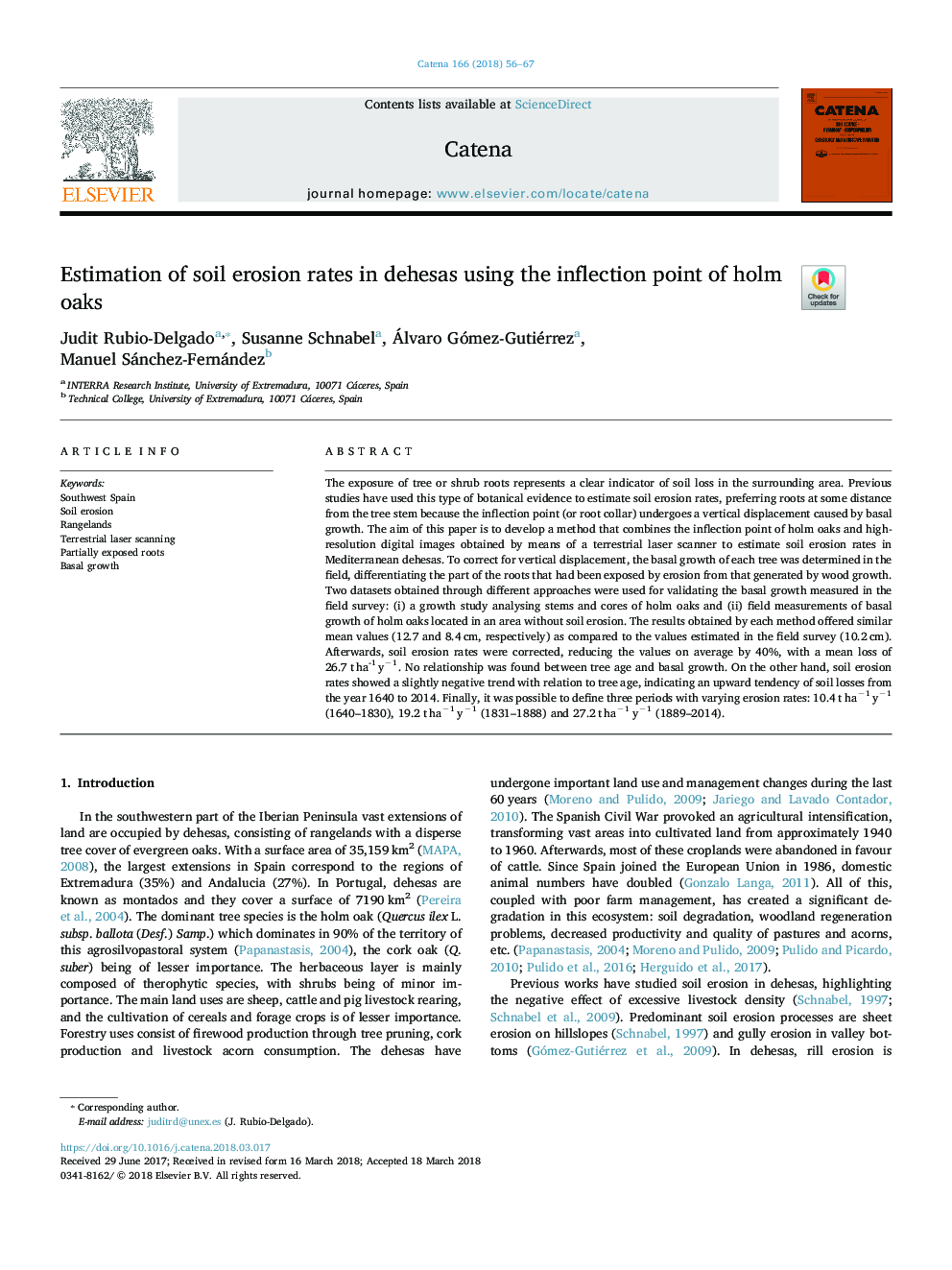| کد مقاله | کد نشریه | سال انتشار | مقاله انگلیسی | نسخه تمام متن |
|---|---|---|---|---|
| 8893521 | 1629188 | 2018 | 12 صفحه PDF | دانلود رایگان |
عنوان انگلیسی مقاله ISI
Estimation of soil erosion rates in dehesas using the inflection point of holm oaks
ترجمه فارسی عنوان
برآورد میزان فرسایش خاک در دشت با استفاده از نقطه انفجار بلوط
دانلود مقاله + سفارش ترجمه
دانلود مقاله ISI انگلیسی
رایگان برای ایرانیان
کلمات کلیدی
جنوب غربی اسپانیا، فرسایش خاک، مراتع، اسکن لیزر زمینی، ریشه ها به طور جزئی در معرض، رشد پایه،
موضوعات مرتبط
مهندسی و علوم پایه
علوم زمین و سیارات
فرآیندهای سطح زمین
چکیده انگلیسی
The exposure of tree or shrub roots represents a clear indicator of soil loss in the surrounding area. Previous studies have used this type of botanical evidence to estimate soil erosion rates, preferring roots at some distance from the tree stem because the inflection point (or root collar) undergoes a vertical displacement caused by basal growth. The aim of this paper is to develop a method that combines the inflection point of holm oaks and high-resolution digital images obtained by means of a terrestrial laser scanner to estimate soil erosion rates in Mediterranean dehesas. To correct for vertical displacement, the basal growth of each tree was determined in the field, differentiating the part of the roots that had been exposed by erosion from that generated by wood growth. Two datasets obtained through different approaches were used for validating the basal growth measured in the field survey: (i) a growth study analysing stems and cores of holm oaks and (ii) field measurements of basal growth of holm oaks located in an area without soil erosion. The results obtained by each method offered similar mean values (12.7 and 8.4â¯cm, respectively) as compared to the values estimated in the field survey (10.2â¯cm). Afterwards, soil erosion rates were corrected, reducing the values on average by 40%, with a mean loss of 26.7â¯tâ¯haâ1â¯yâ1. No relationship was found between tree age and basal growth. On the other hand, soil erosion rates showed a slightly negative trend with relation to tree age, indicating an upward tendency of soil losses from the year 1640 to 2014. Finally, it was possible to define three periods with varying erosion rates: 10.4â¯tâ¯haâ1â¯yâ1 (1640-1830), 19.2â¯tâ¯haâ1â¯yâ1 (1831-1888) and 27.2â¯tâ¯haâ1â¯yâ1 (1889-2014).
ناشر
Database: Elsevier - ScienceDirect (ساینس دایرکت)
Journal: CATENA - Volume 166, July 2018, Pages 56-67
Journal: CATENA - Volume 166, July 2018, Pages 56-67
نویسندگان
Judit Rubio-Delgado, Susanne Schnabel, Álvaro Gómez-Gutiérrez, Manuel Sánchez-Fernández,
